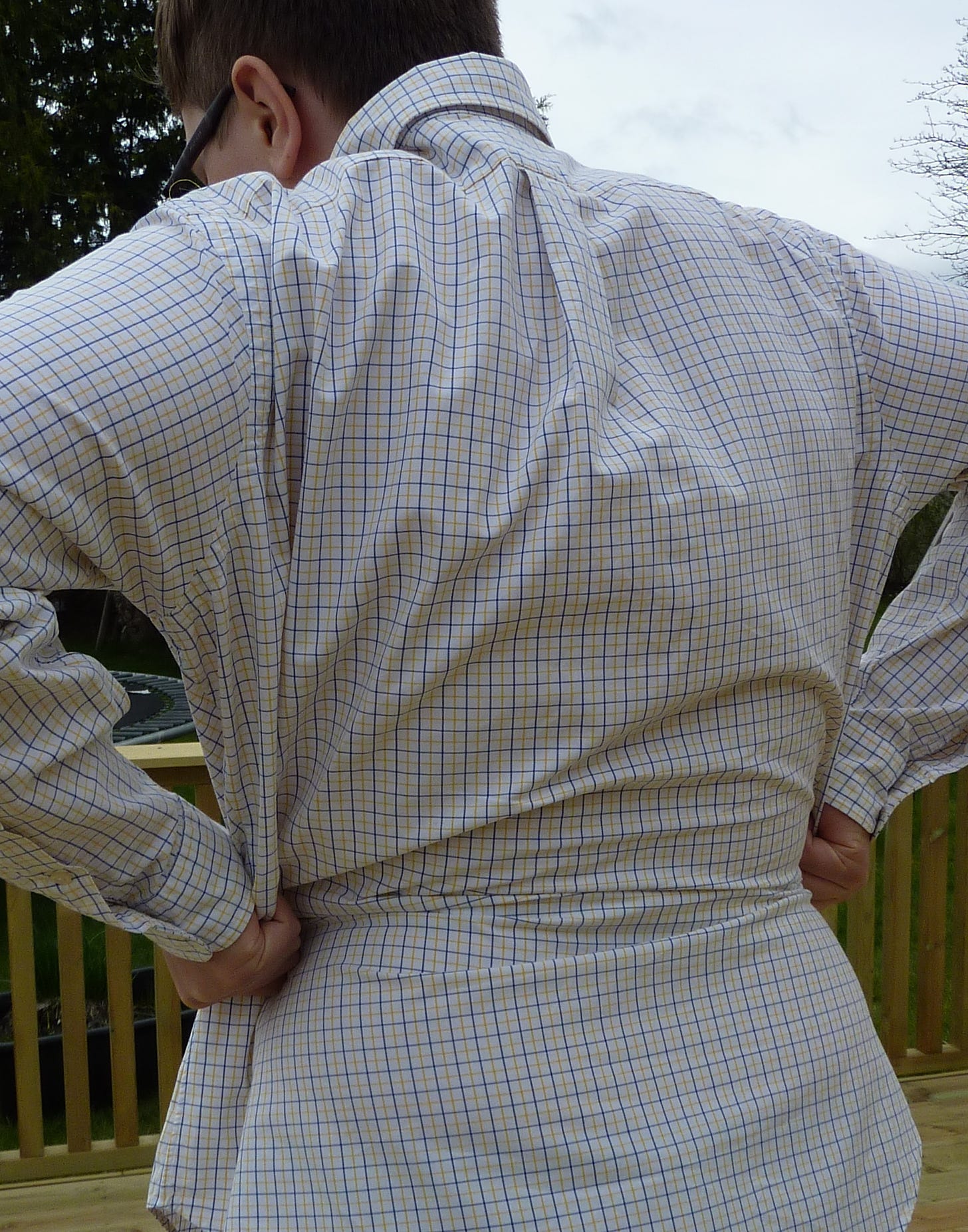I should begin with the facts: I have never had a c-section. Sometimes, people want to to give me a proverbial cookie for managing to birth my twins vaginally, which makes me want to throw punches. (My growth-restricted daughter, who needed a vacuum assist, had a birth injury from the event. I’ll never know, but it feels obvious to me that it wouldn’t have happened had she been born via cesarian. She’s great now!)
When I was newly pregnant, I called a person named Elizabeth (not her real name), who is my parents’ best friends’ oldest daughter, 10+ years my senior, and a role model to me. She is also, incidentally, a very well respected OBGYN.
“Elizabeth,” I said, “I think I might want a planned c-section, but I’m getting pressure from everyone not to. My mom keeps saying, ‘What ever happened to natural birth?’”
“I’ll tell you what happened,” — I had never heard Elizabeth so fired up — “People died. Babies died. Mothers died. C-sections save lives.”
I’ve been on that side of the thought line ever since. A c-section, or belly birth, is just as valid a way to give birth as a vaginal delivery. Of course, you are entitled to your feelings about your birth(s), and many emergent c-sections can be perceived as traumatic. That’s real. You’re allowed to be angry, or sad, or, alternatively — psyched.
But! A c-section is not a free ticket to a chill pelvic floor.
Let’s do this.

Here’s the tl;dr:
To state the obvious, a cesarian birth is major abdominal surgery. As we know, the abdominal fascia is connected to the anterior pelvic floor, which means that there can be associated tension in the pelvis post c.
Folks with c-sections can experience urinary incontinence, pain with penetration, scar pain and associated numbness or hypersensitivity, as well as hip and back pain. If there was prolonged pushing for an attempted vaginal birth turned cesarian, the risk of prolapse increases.
Frequently, there is an emotional component to scar care for cesarians. This is a real factor that needs to be addressed.
Lymphatic drainage, scar tissue work, and a pelvic floor workup are non-negotiables for anyone who has had a c-section, IMO!
The deep dive:
I will never forget a client named Katie, who had a planned c-section due to her anxiety about the unknowns of giving birth. Katie presented six months postpartum with scar pain and stress urinary incontinence (SUI), and she was pissed. “I thought this wasn’t supposed to happen with a c-section!”
Let’s be very clear: Katie’s decision around how she wanted to give birth is hers, and it’s a super valid one. But I was frustrated by the lack of education she received in her prenatal care. If this was such a priority for her, why had no one told her that the risk of SUI is still present in any type of birth?
Let’s break this down: In a classic study comparing nulliparous (people who haven’t given birth) to those who had c-sections to those who had vaginal deliveries, the rates of urinary incontinence were 10.1, 15.9, and 21.0 percent, respectively. (A note that these folks were not immediately postpartum, when rates of SUI are generally higher.) We can see this reflected in the graph below, which notes surgeries for SUI over time postpartum:

Many would argue that pregnancy is the uniting factor here, but I think there are unique risk factors to cesarians at play: First of all, folks who have a cesarian birth after a prolonged pushing period (generally recognized as anything at or above two hours) are, to state the obvious, going to feel the risks of prolonged pushing. These include stress incontinence, urinary urgency, and fecal incontinence. So, there’s that.
But also! Remember that the fascia of the anterior pelvic floor is directly connected to abdominal fascia. Cut the abdominal fascia, add scarring, and the pelvic floor can very frequently get too tense as a result.
You might be thinking — why would too-tight be a problem when it comes to stress incontinence? I would be thrilled to tell you. The ideal pelvic floor is like a trampoline — both strong and resilient. Yes, too much laxity is a problem. But so is too much tension. Too much tension and the pelvic floor cannot handle the intra-abdominal pressure of, say, a sneeze. That’s when leaking can happen.
So here we were, Katie and I, with a predictably very tight pelvic floor. What was even more insane to me was that Katie wasn’t educated on the fact that over 25 percent of folks who have a c-section experience some type of chronic post operative pain. In my experience, this manifests most as scar pain, pain with penetration (these two often go together), lower back pain, and hip pain.
Why could one’s hip hurt after a c? Again, fascia! If you’re wearing a looser shirt right now, pinch is somewhere. See how the pull of that pinch can change the way a lot of the fabric falls? That’s kind of like how disrupting fascia in one area (i.e. the lower abdomen) and cinching it can create a pull from the back, hips, and pelvic floor.
Finally, it’s so incredibly important to acknowledge that many people did not want their birth(s) to turn into a cesarian experience. Our society is pretty fucked up around creating a hierarchy of birth, and it results in birthing people feeling like they failed in some capacity for reasons that are often totally out of their control.
True story: I’ve had several patients that didn’t progress with a traditional, bio-mechanical approach to c-section care (including manual scar tissue work, pelvic floor release, and deep core strengthening). When I finally invited them into a somatic release session while working on the scar, “everything changed.” (Their words, not mine.) They were able to touch their scars, and the pain resolved. (Remember that pain is a phenomenon in the brain and therefore can be drastically changed by nervous system regulation!)
This definitely isn’t the case for everyone, but I think it’s important to note that if you’re feeling really stuck in the rehab process and know you have some big feelings around the scar, it’s worth honoring that, too.
Here’s the take-home:
You are not screwed. Say that again.
I really want to reinforce this: You are entitled to your feelings re: your birth(s). If you feel amazing about your c-section, I fucking love that for you!
And if you feel like your c-section was wrongly done, or traumatic, or misguided, I hear you and witness that fully.
If you’re struggling with pelvic floor dysfunction related to your c-section, here are some recommendations:
If possible, seek care from a pelvic floor therapist: Look for an OT/PT that is trauma informed and someone who you like. I honestly think personal fit is huge when choosing a provider.
I love vibration for scars! I recommend using anything you’ve got (lactation massager, regular old vibrator, old vibrating toothbrush, etc.) to improve blood flow in and around the scar tissue (go about 1.5 inches above, below, and to the sides of the scar, too). Vibration also desensitizes scar tissue, which can be helpful for both pain and hypersensitivity. If you don’t have anything that vibrates, I like this one.
Consider basic lymphatic work: Do this around the belly and scar (when it is well healed!) to reduce excess fluid and support scar tissue healing, as well as desensitize. The easiest way to do this is get a dry brush and just mess around with it! (Yes, there are absolutely specific strategies but that’s not my area of expertise, and I believe you can do a lot of good just by getting input to the area.)
Focus on pelvic floor release and mobility movements first: This is especially true if you cannot see someone IRL, and therefore do not have a professional assessment of your pelvic floor. Assume it’s tight. You can access lots of release-related content in my online platform — go to the category appropriately entitled Release + Heal! Use the code HELLO for a free month.
As always, I am rooting for you. Please reach out to me in the comments or via dm if you have a question or feedback. And maybe share with a person who might benefit, too!




I had severe SPD during pregnancy, and unfortunately, it didn't resolve after birth. My vaginal delivery was really traumatic, and I’ve often wondered if opting for a c-section might have eased some of the pressure on my pelvis. I know a c-section isn’t easy either, but it’s something I’ve thought about. This was such an interesting read for me. It brings me a little bit of peace to know that, no matter the method, the outcome for my body might have been the same - especially when you mention the lower back and hip pain!
There is a wonderful group called ICAN: international cesarean awareness network. They offer peer support and do advocacy around c-sections. As someone who had an unplanned c-section, I found a local chapter and went to a peer support session. I am not a “process in a group” type of person, but that session was deeply, deeply healing for me. Listening to people tell their stories, I knew two things: I wasn’t alone, and I wasn’t a failure.